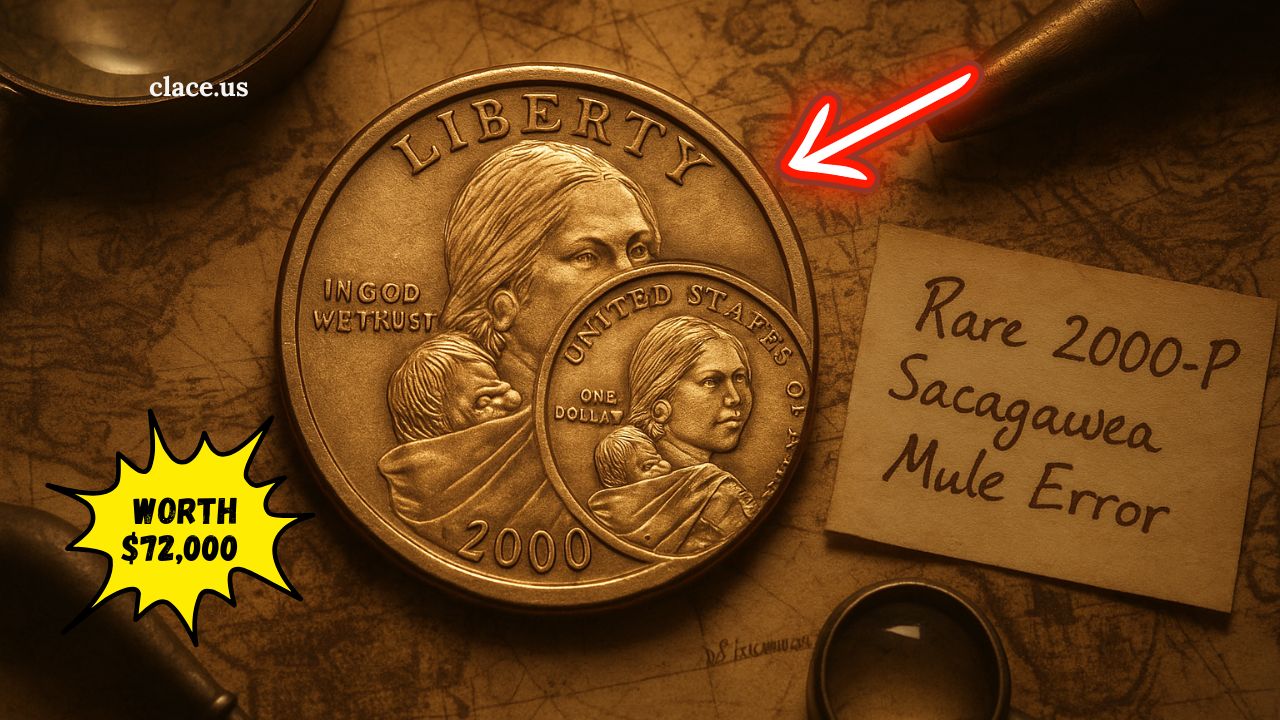2000-P Sacagawea Dollar Mule Error – How To Identify The $72,000 Coin
Imagine finding a seemingly ordinary 2000-P Sacagawea dollar in your change that turns out to be worth tens of thousands of dollars.
That may just happen if it’s the rare mule error featuring the obverse of a Washington quarter paired unexpectedly with the reverse of the Sacagawea dollar.
Collectors prize this modern minting oddity—and some specimens have fetched up to six figures.
What Makes It So Special? Understanding the Mule Error
A mule coin is a minting error where the obverse and reverse dies, designed for different coin types, are mismatched during striking.
In this case, a Washington quarter obverse accidentally paired with a Sacagawea dollar reverse resulted in a double-denomination error that defies standard design rules.
Discovery & Rarity
- First discovered in May 2000 by collector Frank Wallis in Arkansas, this mule coin was pulled from regular circulation—just a few months after initial minting began.
- The mint later recovered and destroyed most of the error coins, but a small number escaped into public hands.
- To date, 11 to 19 authenticated specimens are known to exist, making it extremely rare.
Identification Guide
| Feature | What to Look For |
|---|---|
| Obverse Design | Portrait of George Washington — unmistakably from a state quarter |
| Reverse Design | Classic Sacagawea dollar eagle features with “ONE DOLLAR” inscription |
| Mint Mark | A “P” mint mark on the obverse, indicating Philadelphia origin |
| Coin Composition | Clad with manganese brass (gold-colored), like normal Sacagawea dollars |
| Grade & Condition | Any high-grade specimens (MS-65 or above) significantly boosts value |
| Rarity | Extremely limited; owning one means possessing a museum-quality coin |
Why This Mule Error Trades for Six Figures
- Historic First: This was the first genuine mule error to come from the U.S. Mint in modern times.
- Scarcity: With fewer than 20 examples known, collector demand far exceeds supply.
- High Collector Interest: The novelty of seeing two different coin designs on one piece is irresistibly compelling.
- Premium Grading: Top-condition coins graded MS-66 or MS-67 by PCGS or NGC fetch the highest prices—hundreds of thousands of dollars.
- Auction Record: Some specimens have achieved auction results upwards of $100,000 or more, with value notably increasing in recent years.
How to Examine Your Coin Safely
- Use a magnifier to check for the mismatched designs—double denomination is visually obvious.
- Check the mint mark—the “P” on the obverse indicates the Philadelphia Mint.
- Weigh and measure—confirm it matches a standard Sacagawea dollar in weight and diameter.
- Consult a reputable coin grader like PCGS or NGC to verify authenticity.
- Handle with care—keep the coin in a protective holder to preserve mint condition.
The 2000-P Sacagawea Dollar Mule Error is more than just a minting anomaly—it’s one of the most sought-after modern coin rarities.
With its compelling backstory, extreme scarcity, and auction values soaring into the six figures, it exemplifies how something ordinary can become extraordinary. If you believe you’ve found one, proper authentication could unveil its true—extraordinary—worth.
